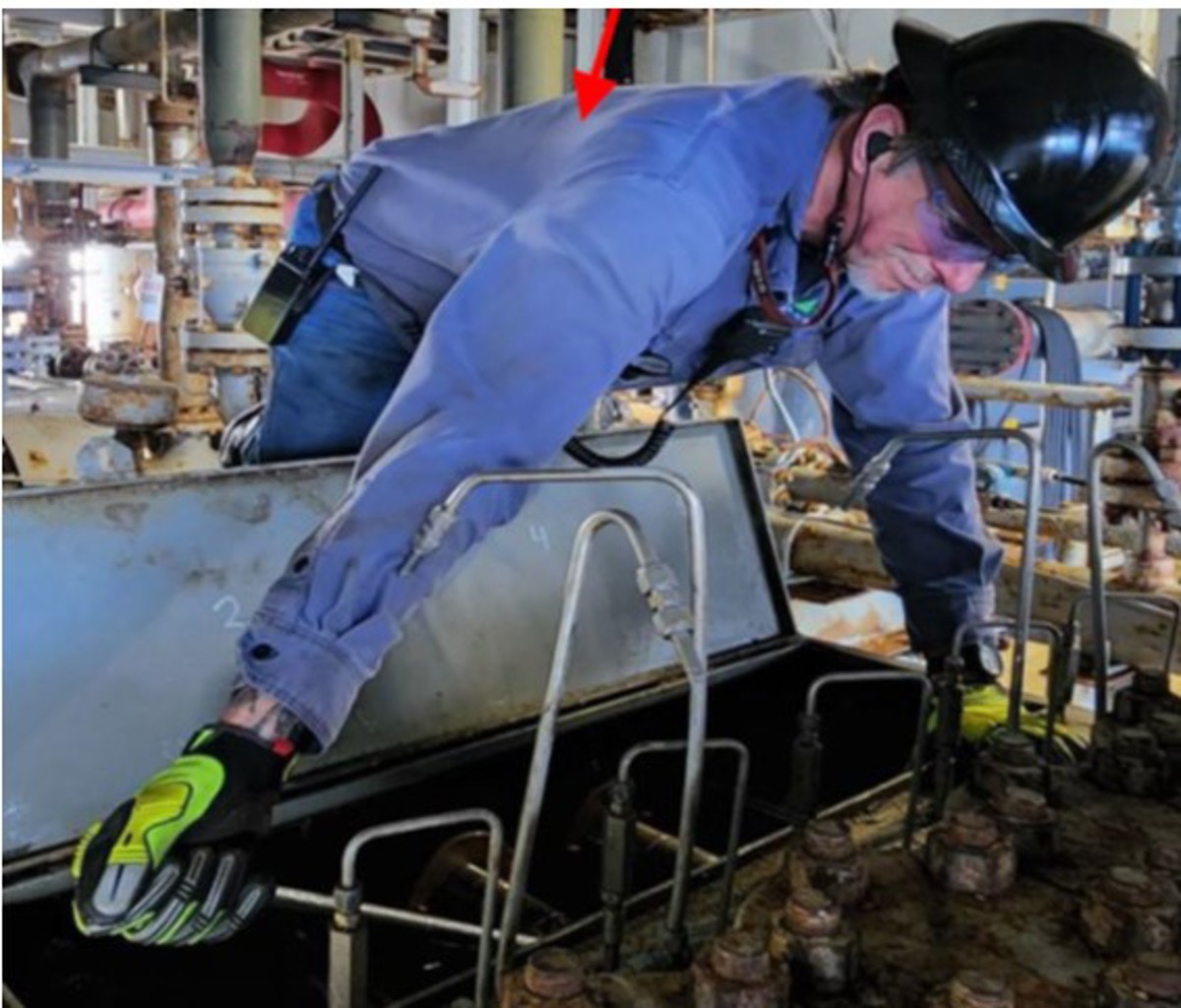BSEE: A note on repetitive strain injuries
- Safety Flash
- Published on 23 November 2022
- Generated on 8 December 2025
- IMCA SF 26/22
- 3 minute read
Jump to:
The United States Bureau of Labor Statistics (BLS) has published Safety Alert 451 relating to Body mechanics, (manual) lifting techniques, and repetitive motion leading to strain injuries.
The BLS tracks occupational injuries, illnesses, and fatalities in the United States on an annual basis. Sprains, strains, and tears are categorized as Musculoskeletal Disorders (MSD) for these statistics. The BLS noted that in 2020, MSDs were a leading cause of non-fatal occupational injuries, with 157,290 cases attributed to strains alone.
A strain occurs when a muscle or tendon is stretched or torn. The number of MSD injuries is increasing in frequency throughout the Gulf of Mexico Region. Most of these MSDs were due to repetitive motion, overexertion, and awkward lifting and pulling techniques.

Recent injury due to excessive force and awkward body position (this is a re-enactment)
What happened?
The following are incidents BSEE reviewed that occurred in the last five months, for your awareness:
- A mechanic using a breaker bar to loosen a nut sustained a strain injury in his right shoulder.
- While testing blowout preventers, an operator was in the process of closing a plug valve with an extension handle and sustained a strain injury in his lower back.
- An electrician was bending over to move batteries inside a Supervisory Control and Data Acquisition (SCADA) battery box and sustained a strain injury with muscle spasms in his lower back.
- An individual reported to the medic with the complaint of feeling a “pop” behind his left knee while transitioning from a stairwell onto the drilling deck.
What were these people doing wrong?
The Safety Alert notes that the potential for strain injuries can be reasonably anticipated as associated hazards are present in the offshore work environment. Steps can be taken to mitigate the risks for strain injuries. The two most applicable contributing factors are Ergonomics and Individual Risk Factors:
- Ergonomic Risk Factors include excessive force loads on the human body, extreme repetition, and awkward posture. To mitigate the risks associated with ergonomic hazards, engineering and administrative controls must be appropriately evaluated;
- Individual Risk Factors include poor work practices, overall health habits, rest and recovery, and nutrition and fitness. To mitigate the risks associated with individual risk factors, employees should be trained in all aspects of human performance and ergonomics. Additionally, implement early intervention processes to recognize MSD early warning signs to prevent them from developing into an injury.
Putting ergonomic and administrative controls in place, to reduce the risks associated with MSD injury hazards, is part of the company’s responsibility to provide a safe workplace for its people.
9% of IMCA members reported LTIs for all time are caused by muscle stress and repetitive strain.
Members may wish to refer to:
IMCA short video on manual handling: Manual handling – IMCA (imca-int.com)
- OSHA’s ergonomic guidelines: https://www.osha.gov/ergonomics
- OSHA’s Sprains and Strains in Construction/Pulling Cables video
Related Safety Flashes
-
IMCA SF 14/21
20 May 2021
-
-
IMCA SF 16/15
22 October 2015
IMCA Safety Flashes summarise key safety matters and incidents, allowing lessons to be more easily learnt for the benefit of the entire offshore industry.
The effectiveness of the IMCA Safety Flash system depends on the industry sharing information and so avoiding repeat incidents. Incidents are classified according to IOGP's Life Saving Rules.
All information is anonymised or sanitised, as appropriate, and warnings for graphic content included where possible.
IMCA makes every effort to ensure both the accuracy and reliability of the information shared, but is not be liable for any guidance and/or recommendation and/or statement herein contained.
The information contained in this document does not fulfil or replace any individual's or Member's legal, regulatory or other duties or obligations in respect of their operations. Individuals and Members remain solely responsible for the safe, lawful and proper conduct of their operations.
Share your safety incidents with IMCA online. Sign-up to receive Safety Flashes straight to your email.